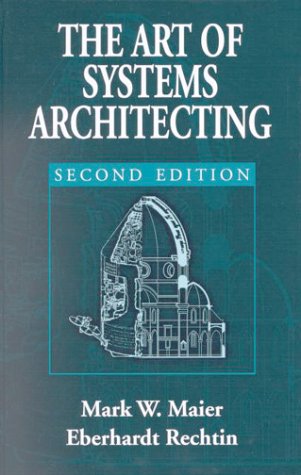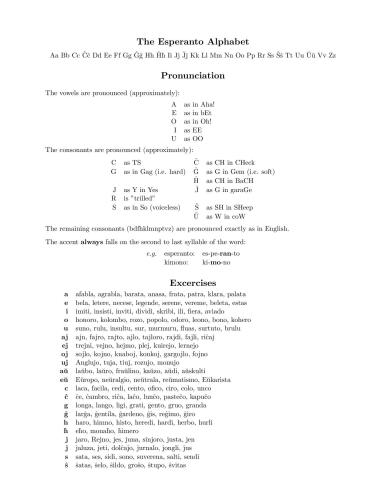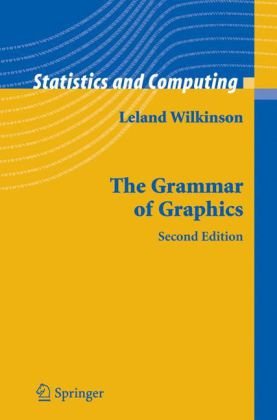Mark W. Maier, Eberhardt Rechtin0849304407, 9780849304408
Table of contents :
Table of Contents……Page 0
The Art of Systems Architecting……Page 1
Dedications……Page 4
The continuing development of systems architecting……Page 5
Architecting in the system world……Page 6
Distinguishing between architecting and engineering……Page 7
Criteria for mature and effective systems architecting……Page 9
The architecture of this book……Page 10
Changes since the first edition……Page 11
Acknowledgments……Page 12
The Authors……Page 14
Contents……Page 16
A brief review of classical architecting methods……Page 23
Notes and references……Page 25
New domains, new insights……Page 26
Exercise to close part two……Page 28
A civil architecture analogy……Page 29
Guide to part three……Page 30
The systems architecting profession……Page 32
Responding to complexity……Page 34
The high rate of advances in the computer and information sciences……Page 36
A systems approach……Page 37
A purpose orientation……Page 39
A modeling methodology……Page 40
Ultraquality implementation……Page 41
Certification……Page 44
Insights and heuristics……Page 46
The architecture paradigm summarized……Page 47
The waterfall model of systems acquisition……Page 48
Spirals, increments, and collaborative assembly……Page 50
Notes and references……Page 52
Introduction: a metaphor……Page 54
Heuristics as abstractions of experience……Page 55
Selecting a personal kit of heuristic tools……Page 56
Using heuristics……Page 59
Generating useful heuristics……Page 60
A taxonomy of heuristics……Page 61
New directions……Page 62
Notes and references……Page 63
Incremental development for an existing customer……Page 65
New products, new markets……Page 66
Technological substitutions within existing systems……Page 67
Consequences of uncertainty of end purpose……Page 68
Risk management by intermediate goals……Page 69
The “what next?” quandary……Page 70
Controlling the critical features of the architecture……Page 71
Abandonment of an obsolete architecture……Page 72
Creating innovative teams……Page 73
Architecting “revolutionary” systems……Page 75
Systems architecting and basic research……Page 76
General……Page 77
Exercises……Page 78
Notes and references……Page 79
Introduction: the manufacturing domain……Page 81
Ultraquality systems……Page 82
Intersecting waterfalls……Page 84
The spiral-to-circle model……Page 86
Concurrent engineering……Page 89
Feedback systems……Page 90
Lean production……Page 94
Flexible manufacturing……Page 97
In conclusion……Page 99
Notes and references……Page 100
Public participation……Page 102
The foundations of sociotechnical systems architecting……Page 103
Socioeconomic insights……Page 104
The interaction between the public and private sectors……Page 107
Facts vs. perceptions: an added tension……Page 108
Heuristics for social systems……Page 110
Exercises……Page 111
Notes and references……Page 112
Introduction: the status of software architecting……Page 113
Software as a system component……Page 116
Software for modern systems……Page 117
Systems, software, and process models……Page 118
Waterfalls for software?……Page 119
Spirals for hardware?……Page 121
Integration: spirals and circles……Page 122
The problem of hierarchy……Page 125
Object-orientation……Page 126
Layered design……Page 127
Reconciling the hierarchies……Page 129
The role of architecture in software-centered systems……Page 130
Programming languages, models, and expressions……Page 131
Architectures, “unifying” models, and visions……Page 132
Directions in software architecting……Page 133
Architectural styles……Page 134
Architecture through composition……Page 137
Heuristics and guidelines in software……Page 138
Exercises……Page 141
Notes and references……Page 142
Introduction: collaboration as a category……Page 143
The Internet……Page 144
Intelligent transportation systems……Page 147
Analogies for architecting collaborative systems……Page 149
Collaborative system heuristics……Page 150
Policy triage……Page 151
Leverage at the interfaces……Page 152
Variations on the collaborative theme……Page 153
Misclassification……Page 155
Standards and collaborative systems……Page 157
Conclusions……Page 159
Notes and references……Page 160
Introduction: roles, views, and models……Page 161
Roles of models……Page 162
Models, viewpoints, and views……Page 163
Classification of models by view……Page 164
Note to the reader……Page 165
Objectives and purpose models……Page 166
Scale models……Page 168
Block diagrams……Page 169
Behavioral (functional) models……Page 171
Threads and scenarios……Page 172
Mathematical systems theory……Page 173
Public choice and behavior models……Page 175
Performance models……Page 176
Formal methods……Page 177
Data models……Page 178
Examples of integrated models……Page 180
Summary……Page 181
Exercises……Page 182
Notes and references……Page 183
Introduction: architecting process components……Page 184
Design progression……Page 185
Introduction by examples……Page 186
Evaluation criteria and heuristic refinement……Page 187
Concurrent progressions……Page 189
Episodic nature……Page 190
Historical approaches to architecting……Page 191
Specialized and formalized heuristics……Page 193
Scoping……Page 194
Aggregation and partitioning……Page 197
Certification……Page 198
Certainty, rationality, and choice……Page 200
Stopping or progressing?……Page 203
Architecture and design disciplines……Page 206
Architecture and patterns……Page 208
Conclusions……Page 210
Notes and references……Page 211
General integrated models……Page 213
Hatley/Pirbhai – computer-based reactive systems……Page 214
Example: microsatellite imaging system……Page 215
Quantitative QFD (Q2FD) – performance-driven systems……Page 217
Integrated modeling and software……Page 219
Structured analysis and design……Page 220
ADARTS……Page 224
OMT……Page 227
UML……Page 229
Perfomance integration: scheduling……Page 231
Integrated models for manufacturing systems……Page 232
Integrated models for sociotechnical systems……Page 233
Notes and references……Page 235
Introduction……Page 237
Understanding “architectural level”……Page 238
U.S. DoD C4ISR……Page 239
Operational view……Page 240
System view……Page 241
Evaluation for the C4ISR framework……Page 242
ISO RM-ODP……Page 243
Proprietary and semi-open information technology standards……Page 245
P1471 concepts……Page 246
Research directions……Page 248
Notes and references……Page 249
Introduction: the political challenge……Page 250
Politics as a design factor……Page 251
The first skill to master……Page 252
Heuristics in the political process: “the facts of life”……Page 253
Fact of life #1……Page 254
Fact of life #2……Page 255
Fact of life #3……Page 256
Fact of life #4……Page 257
Fact of life #5……Page 258
A few more skills to master……Page 260
Conclusion……Page 261
The profession of systems engineering……Page 262
Systems architecting and systems standards……Page 265
The ballistic missile program of the 1950s……Page 266
The beginnng of a new era of standards……Page 267
EIA/IS 632, an architectural perspective……Page 268
IEEE P 1220, an architectural perspective……Page 269
Company standards……Page 271
Systems engineering universities and systems architecting……Page 272
Curriculum design……Page 274
Advanced study in systems architecting……Page 275
Conclusion: an assessment of the profession……Page 276
Notes and references……Page 277
Introduction: organizing the list……Page 280
Multitask heuristics……Page 281
Scoping and planning……Page 283
Modeling (see also Chapters 3 and 4)……Page 285
Aggregating (“chunking”)……Page 286
Partitioning (decompositioning)……Page 287
Certifying (system integrity, quality, and vision)……Page 288
Assessing performance, cost, schedule, and risk……Page 289
Rearchitecting, evolving, modifying, and adapting……Page 290
Notes and references……Page 291
Management……Page 292
Software……Page 293
System thinking……Page 294
Defining architecture”……Page 295
Webster’s dictionary definition……Page 296
IEEE architecture working group (AWG)……Page 297
INCOSE SAWG……Page 298
MIL-STD-498……Page 299
Maier’s tongue-in-check rule of thumb……Page 300
Models, viewpoints, and views……Page 301
Working definitions……Page 302
Notes and references……Page 303
Glossary……Page 305







Reviews
There are no reviews yet.